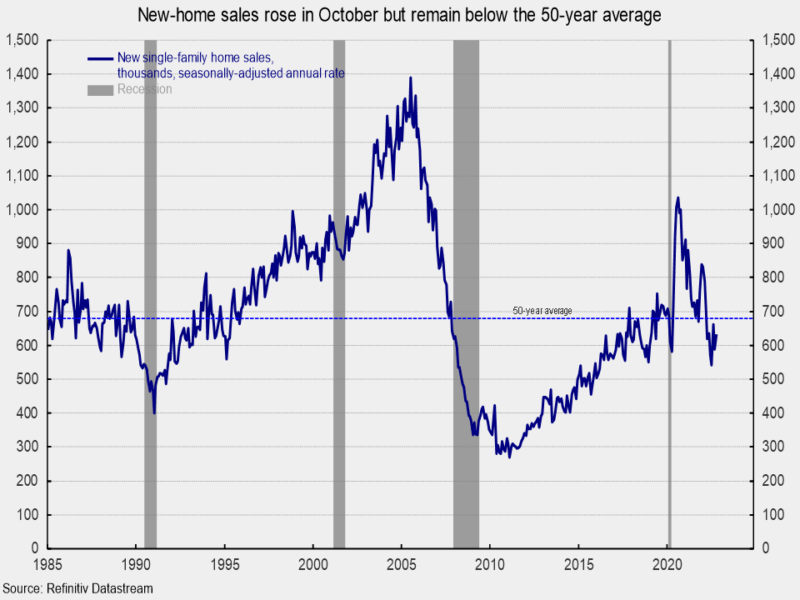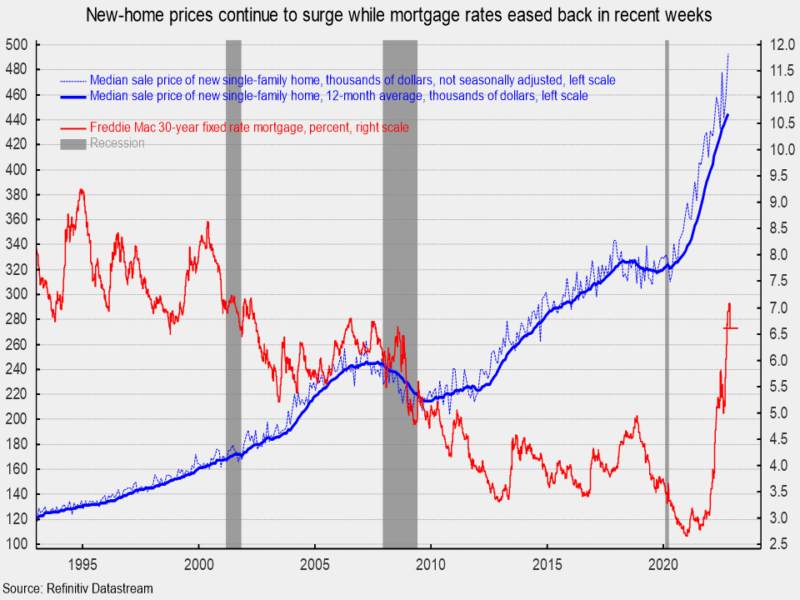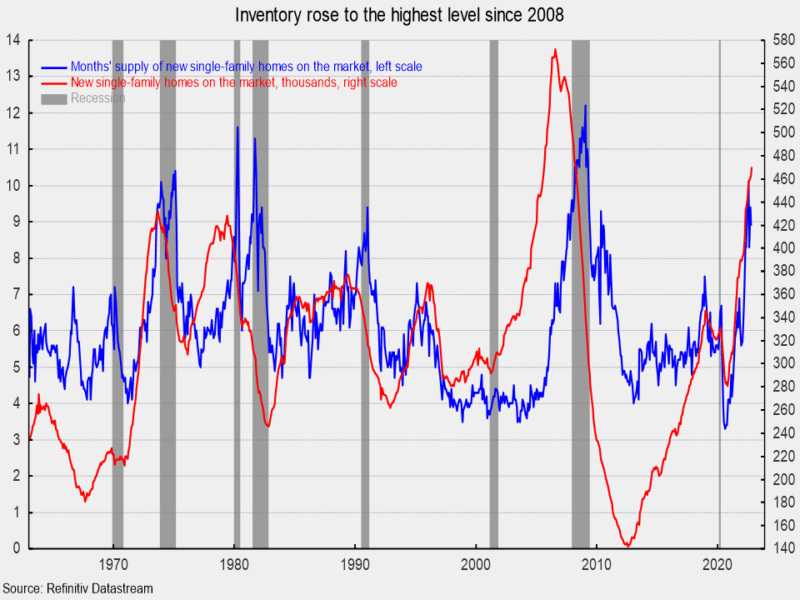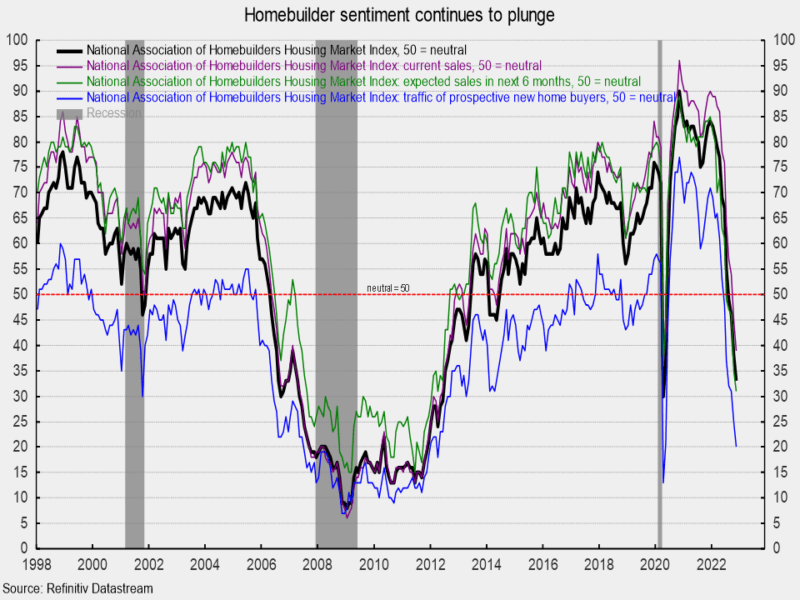New Home Sales Rose in October, But the Outlook Remains Cautious
Sales of new single-family homes rose in October, increasing 7.5 percent to 632,000 at a seasonally-adjusted annual rate from a 588,000 pace in September. The October gain was the third increase in the last eleven months, leaving sales down 5.8 percent from a year ago and down 39.0 percent from the August 2020 post-recession peak. October sales remain below the 50-year average selling rate (see first chart).
In October, sales of new single-family homes were up in two of the four regions. Sales in the Northeast, the smallest region by volume, rose 45.7 percent, and sales in the South, the largest by volume, increased 16.0 percent. However, sales in the Midwest fell 34.2 percent for the month, while sales in the West decreased 0.8 percent.
Over the last 12 months, sales were down in three of the four regions, led by a 26.5 percent fall in the Midwest followed by a 22.8 percent decline in the West, and a 0.3 percent decline in the South. The Northeast region shows a rise of 59.4 percent from October 2021.
The median sales price of a new single-family home was $493,000 (see second chart), up from $455,700 in September (not seasonally adjusted), putting the 12-month average price at a record high of $445,000 (see second chart). Meanwhile, 30-year fixed-rate mortgages were 6.61 percent in late November, down from 7.08 percent in mid-November but up sharply from a low of 2.65 percent in January 2021. The combination of high prices and elevated mortgage rates reduces affordability and squeezes buyers out of the market.
The total inventory of new single-family homes for sale rose 1.5 percent to 470,000 in October, the highest since February 2008. That puts the months’ supply (inventory times 12 divided by the annual selling rate) at 8.9, down 5.3 percent from September but 29.0 percent above the year-ago level. Inventory and the months’ supply remain very high by historical comparison (see third chart). The high level of prices, elevated inventory, and elevated mortgage rates should continue to weigh on housing activity in the coming months and quarters. However, the median time on the market for a new home remained very low in October, coming in at 1.6 months versus 1.5 in September.
Meanwhile, the National Association of Home Builders’ Housing Market Index, a measure of homebuilder sentiment, fell again in November, coming in at 33 versus 38 in October. That is the eleventh consecutive drop and the fourth consecutive month below the neutral 50 threshold. The index is down sharply from recent highs of 84 in December 2021 and 90 in November 2020 (see fourth chart).
All three components of the Housing Market Index fell again in November. The expected single-family sales index dropped to 31 from 35 in the prior month, the current single-family sales index was down to 39 from 45 in October, and the traffic of prospective buyers index sank again, hitting 20 from 25 in the prior month (see fourth chart).









